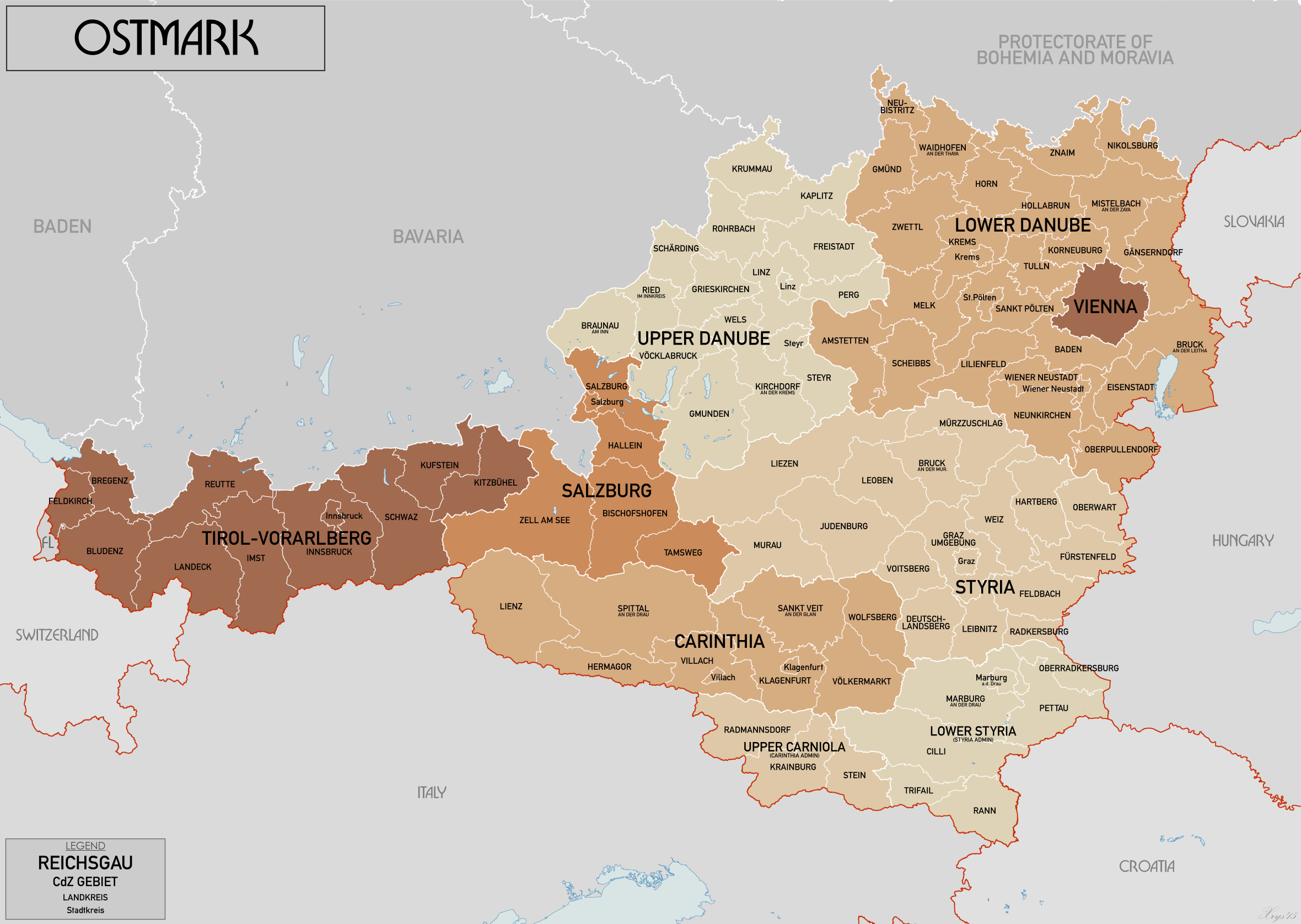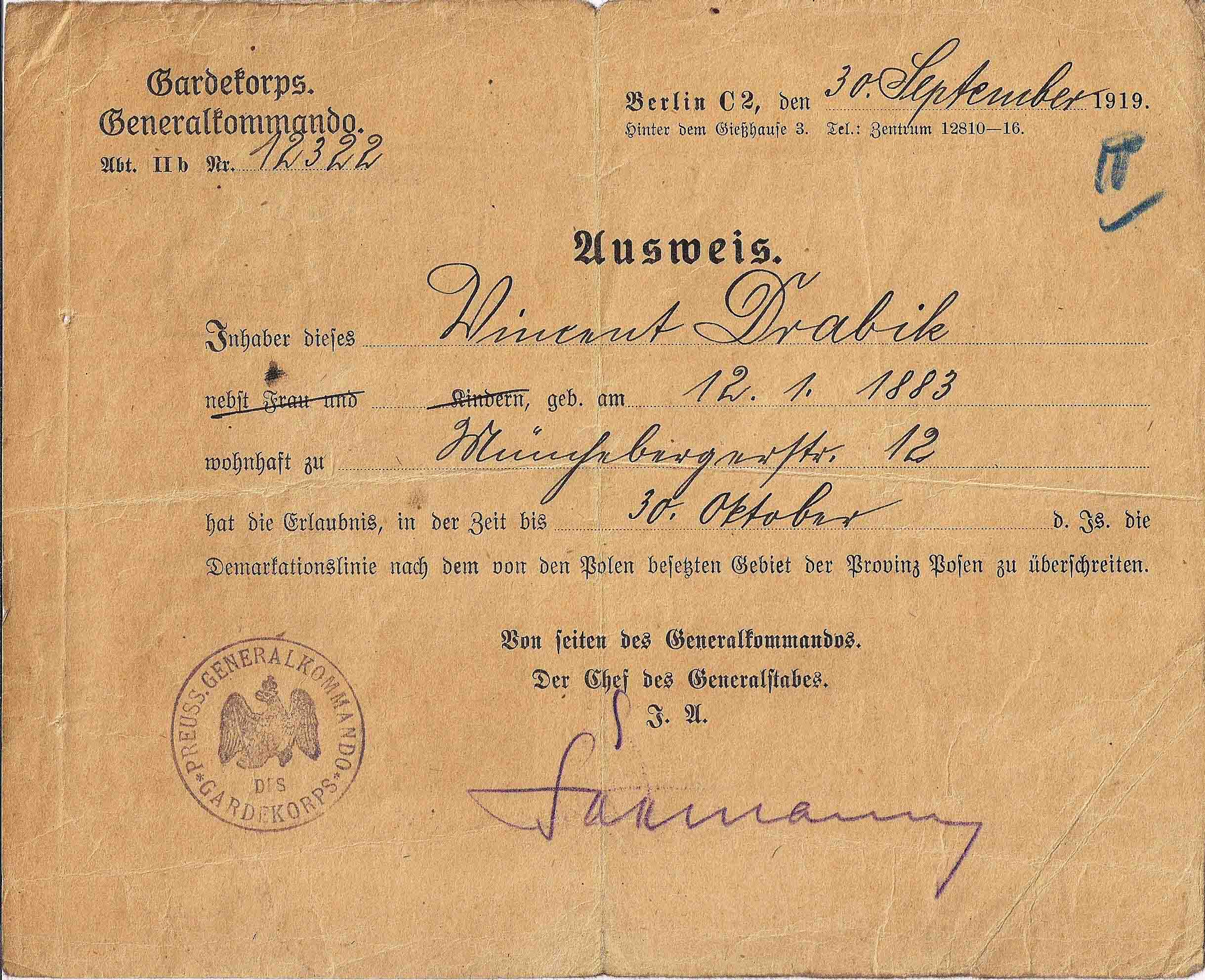|
Ostmark
Ostmark is a German term meaning either Eastern march when applied to territories or Eastern Mark when applied to currencies. Ostmark may refer to: *the medieval March of Austria and its predecessors ''Bavarian Eastern March'' and ''March of Pannonia'' in a post-19th century usage *the medieval Saxon Eastern March east of the Elbe River *the eastern regions of the Prussia acquired in the partitions of Poland, mainly the Province of Posen *Ostmark (Austria), Austria's name when it was part of Nazi Germany *Ostmark was a Gau of the Nazi Party, composed of the Prussian province Posen-West Prussia and eastern parts of Brandenburg Ostmark may refer to the following historical currencies: *East German mark or ''Mark of the German Democratic Republic'', the East German currency before 1990 *German ostmark, short-lived currency used in eastern areas occupied by Germany in 1918 See also *German Eastern Marches Society German Eastern Marches Society (german: Deutscher Ostmarkenverein, als ... [...More Info...] [...Related Items...] OR: [Wikipedia] [Google] [Baidu] |
German Eastern Marches Society
German Eastern Marches Society (german: Deutscher Ostmarkenverein, also known in German as ') was a German radical,Geoff Eley, op.cit.p.43/ref> extremely nationalist xenophobic organization founded in 1894. Mainly among Poles, it was sometimes known acronymically as ''Hakata'' or ''H-K-T'' after its founders von Hansemann, Kennemann and von Tiedemann. Its main aims were the promotion of Germanization of Poles living in Prussia and destruction of Polish national identity in German eastern provinces. Contrary to many similar nationalist organizations created in that period, the Ostmarkenverein had relatively close ties with the government and local administration, which made it largely successful, even though it opposed both the policy of seeking some '' modo vivendi'' with the Poles pursued by Chancellor Theobald von Bethmann Hollweg and Leo von Caprivi's policies of relaxation of anti-Polish measures. While of limited significance and often overrated, the organization formed a no ... [...More Info...] [...Related Items...] OR: [Wikipedia] [Google] [Baidu] |
Saxon Eastern March
The Saxon Eastern March (german: Sächsische Ostmark) was a march of the Holy Roman Empire from the 10th until the 12th century. The term "eastern march" stems from the Latin term ''marchia Orientalis'' and originally could refer to either a march created on the eastern frontier of the East Frankish duchy of Saxony or another on the eastern border of the Duchy of Bavaria: the Bavarian '' marchia Orientalis'' (documented as ''Ostarrîchi'' in 996), corresponding to later Austria. History The Saxon ''Ostmark'' initially referred to the vast ''Marca Geronis'' ('Gero's March'), established about 939 under the rule of King Otto I in the settlement area of the Polabian Slavs (Sorbs), beyond the Saxon Eastern border on the Elbe and Saale rivers. The conquered territories were governed by the Eastphalian legate Gero, count in the Nordthüringgau, who was vested with the Carolingian title of margrave. It was his task to collect tributes and to overcome riots and revolts in the frontier ar ... [...More Info...] [...Related Items...] OR: [Wikipedia] [Google] [Baidu] |
German Ostmark
() is the name given to a currency denominated in which was issued by Germany in 1918 for use in a part of the eastern areas under German control at that time, the area. The currency consisted of paper money issued on 4 April 1918 by the in (Kaunas) and was equal to the German . The circulated alongside the Imperial rouble and the , with two equal to one . Denominations The denominations available were: * mark; * 1 mark; * 2 marks; * 5 marks; * 20 marks; * 50 marks; * 100 marks; * 1000 marks. The reverse sides of the carry a warning against forging banknotes in German, Latvian and Lithuanian. Aftermath The Ostmark and Ostrubel continued to circulate in Lithuania from the end of World War I until 1 October 1922, when they were replaced by the . The names and were used for and , for example, on postage stamps. The reason for the replacement was the link to the , which already suffered from inflation (and would spiral into hyperinflation in 1923). The was pegged to ... [...More Info...] [...Related Items...] OR: [Wikipedia] [Google] [Baidu] |
Ostmark (Austria)
Ostmark (, "Eastern March") was the name used by Nazi propaganda from 1938 to 1942 to replace that of the formerly independent Federal State of Austria after the ''Anschluss'' with Nazi Germany. From the ''Anschluss'' until 1939, the official name used was Land Österreich ("State of Austria"). History Once Austrian-born Adolf Hitler completed the union between his birth country and Germany ''(Anschluss)'', the Nazi government had the incorporated territory renamed. The name ''Austria'' (''Österreich'' in German, meaning "Eastern Realm") was at first replaced by "Ostmark", referring to the 10th century '' Marcha orientalis''. The change was meant to refer to Austria as the new "eastern march" of the Reich. In August 1938, the ''Donau-Zeitung'' proudly referred to Passau as "the cradle of the new ''Ostmark''". Subdivision According to the ''Ostmarkgesetz'' with effect from 1 May 1939 the former States of Austria were reorganized into seven ''Reichsgaue'', each under the rule of ... [...More Info...] [...Related Items...] OR: [Wikipedia] [Google] [Baidu] |
Nazi Party
The Nazi Party, officially the National Socialist German Workers' Party (german: Nationalsozialistische Deutsche Arbeiterpartei or NSDAP), was a far-right politics, far-right political party in Germany active between 1920 and 1945 that created and supported the ideology of Nazism. Its precursor, the German Workers' Party (; DAP), existed from 1919 to 1920. The Nazi Party emerged from the Extremism, extremist German nationalism, German nationalist, racism, racist and populism, populist paramilitary culture, which fought against the communism, communist uprisings in post–World War I Germany. The party was created to draw workers away from communism and into nationalism. Initially, Nazi political strategy focused on anti–big business, anti-bourgeoisie, bourgeois, and anti-capitalism, anti-capitalist rhetoric. This was later downplayed to gain the support of business leaders, and in the 1930s, the party's main focus shifted to Antisemitism, antisemitic and Criticism of ... [...More Info...] [...Related Items...] OR: [Wikipedia] [Google] [Baidu] |
March Of Austria
The Margraviate of Austria (german: Markgrafschaft Österreich) was a medieval frontier march, centered along the river Danube, between the river Enns and the Vienna Woods (''Wienerwald''), within the territory of modern Austrian provinces of Upper Austria and Lower Austria. It existed from c. 972 to 1156. It stemmed from the previous frontier structures, initially created for the defense of eastern Bavarian borders against the Avars, who were defeated and conquered during the reign of Charlemagne (d. 814). Throughout the Frankish period, the region was under jurisdiction of Eastern Frankish rulers, who held Bavaria and appointed frontier commanders (counts) in eastern regions. At the beginning of the 10th century, the region was raided by Magyars. They were defeated in the Battle of Lechfeld (955) and gradual German reconquest of the region began. By 972, newly retaken frontier regions along the river Danube were reorganized into a frontier county ( margraviate) that became ... [...More Info...] [...Related Items...] OR: [Wikipedia] [Google] [Baidu] |
East German Mark
The East German mark (german: Mark der DDR ), commonly called the eastern mark (german: Ostmark, links=no ) in West Germany and after reunification), in East Germany only ''Mark'', was the currency of the German Democratic Republic (East Germany). Its ISO 4217 currency code was DDM. The currency was known officially as the ''Deutsche Mark'' from 1948 to 1964, ''Mark der Deutschen Notenbank'' from 1964 to 1967, and from 1968 to 1990 as the ''Mark der DDR'' (Mark of the GDR). The mark (M) was divided into 100 Pfennig (pf). History 1948 On 18 June 1948 a currency reform was announced for the western zones. Subsequently, on 20 June 1948, the reichsmark and the rentenmark were abolished in the western occupation zones due to Soviet counterfeiting of '' AM-Marks'' resulting in economic instability and inflation and replaced with the ''Deutsche Mark'' issued by the ''Bank deutscher Länder'' (later the Deutsche Bundesbank). Because the ''Reichsmark'' was still legal tender in th ... [...More Info...] [...Related Items...] OR: [Wikipedia] [Google] [Baidu] |
German Language
German ( ) is a West Germanic languages, West Germanic language mainly spoken in Central Europe. It is the most widely spoken and Official language, official or co-official language in Germany, Austria, Switzerland, Liechtenstein, and the Italy, Italian province of South Tyrol. It is also a co-official language of Luxembourg and German-speaking Community of Belgium, Belgium, as well as a national language in Namibia. Outside Germany, it is also spoken by German communities in France (Bas-Rhin), Czech Republic (North Bohemia), Poland (Upper Silesia), Slovakia (Bratislava Region), and Hungary (Sopron). German is most similar to other languages within the West Germanic language branch, including Afrikaans, Dutch language, Dutch, English language, English, the Frisian languages, Low German, Luxembourgish, Scots language, Scots, and Yiddish. It also contains close similarities in vocabulary to some languages in the North Germanic languages, North Germanic group, such as Danish lan ... [...More Info...] [...Related Items...] OR: [Wikipedia] [Google] [Baidu] |
Province Of Posen
The Province of Posen (german: Provinz Posen, pl, Prowincja Poznańska) was a province of the Kingdom of Prussia from 1848 to 1920. Posen was established in 1848 following the Greater Poland Uprising as a successor to the Grand Duchy of Posen, which in turn was annexed by Prussia in 1815 from Napoleon's Duchy of Warsaw. It became part of the German Empire in 1871. After World War I, Posen was briefly part of the Free State of Prussia within Weimar Germany, but was dissolved in 1920 when most of its territory was ceded to the Second Polish Republic by the Treaty of Versailles, and the remaining German territory was later re-organized into Posen-West Prussia in 1922. Posen (present-day Poznań, Poland) was the provincial capital. Geography The land is mostly flat, drained by two major watershed systems; the Noteć (German: ''Netze'') in the north and the Warta (''Warthe'') in the center. Ice Age glaciers left moraine deposits and the land is speckled with hundreds of "finger l ... [...More Info...] [...Related Items...] OR: [Wikipedia] [Google] [Baidu] |

.jpg)


